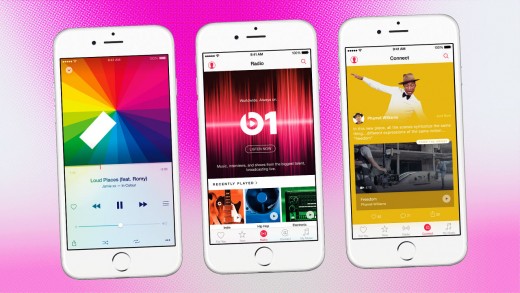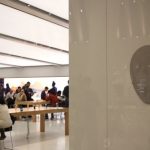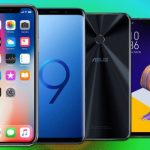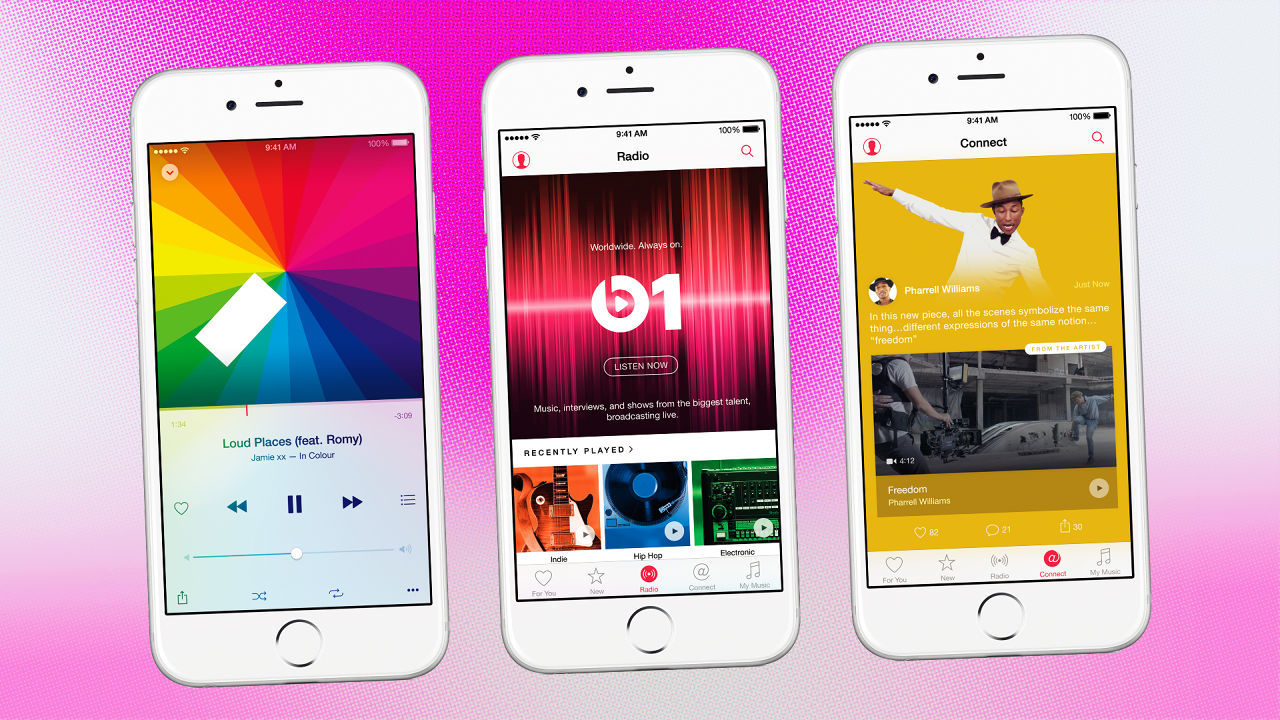Hands On With Apple Music: Solid, But I’m Sticking With Spotify
Apple’s subscription service is officially here. What it lacks in originality, it makes up for with curation and a few other perks.
As of this week, Apple is officially one of the countless companies with an on-demand music subscription service. Twelve years after Steve Jobs unveiled the iTunes Music Store—and famously referred to the subscription model as “the wrong path” for the music industry—the company has unleashed iOS 8.4 and with it, the brand new Apple Music app.
Apple’s music-streaming service is very solid, even if it doesn’t bring much that’s new to this crowded field. It mimics the best of the existing subscription services and tosses in a few unique features of its own. With an offering this robust preloaded on every new iOS device, Apple could make a serious dent in this market. But while it’s a well-executed product, I’m not giving up my Spotify subscription anytime soon.
At its core, Apple Music offers everything that Spotify and Rdio do: A massive library of music from the major labels and tons of indie labels with curated playlists (broken down by factors like genre and activities) and algorithmically generated radio stations (with a more old-school format thrown in via the Beats 1 channel). But as a bolt-on to Apple’s existing music empire, it packs in a few extra perks. The service seamlessly merges your purchased and ripped music with Apple’s massive on-demand library of songs, for instance. It also probably already knows something about your musical taste. And it already knows your credit-card number, which might turn out to be Apple’s secret weapon in this game. (The sign-up process is effortless, and the three-month trial doesn’t hurt.)

Apple Music Is Amazing At Discovery
Apple Music has algorithms doing things like creating Genius playlists and artist-based, Pandora-style radio stations. But as with the Beats Music app that Apple gobbled up and rebuilt, Apple Music is focused very heavily on human curation. In addition to broadcasting radio stations DJ’ed by popular artists, Apple Music employs hundreds of music editors to build playlists, some of which are very specific. After telling Apple Music a few things about my preferences, it showed me playlists like “Best of 90s Lo Fi,” songs by artists inspired by the electronic musician Autechre, and a playlist of Madonna hits. All of these were spot-on for me, from massive 1980s radio hits to more obscure electronic music. That range suggests Apple Music has the power to reel in casual listeners and music snobs alike, which is a pretty big deal. Other playlists it offered up, like one called “Intro to Beck”, made me shrug, but I appreciated the sentiment anyway.
Listening to these playlists, it’s obvious that somebody—probably with very keen taste and knowledge of music—hand-selected these tracks. A computer didn’t throw some “if you like that, you’ll like this” logic at a well-known artist and call it a day. In addition to genre-oriented playlists, there are lots of delightfully specific ones as well: “Indie Hits from 1999.” “Radiohead Remixes.” “Songs Inspired by the Beach Boys.” “Mariah Carey Ballads.” “Songs Containing Music Criticism” (seriously). The “For You” tab isn’t a static list of recommendations: It evolves as the day goes on, adding new albums based on your listening and surfacing new playlists. When I opened the app at around 7:00pm, it showed me a playlist called “Cooking With Indie”, presuming—incorrectly—that I had not just ordered a pizza. Smart, though.
Apple Music’s curation takes other forms throughout the app. In the “For You” tab, it offers straight-up album recommendations, many of which were pretty savvy for me. Yes, I’m into Tame Impala, Sonic Youth, Squarepusher and the first Whitney Houston album—sure, that’s sort of a weird combination, but Apple Music gets me and doesn’t judge.
There’s also the “Connect” tab, which lets you follow artists and publishers Tumblr-style. Your mileage here will vary depending on how many artists are participating in Connect—right now, it seems to be a relatively small selection of current, popular artists—but it’s still a good place to find playlists and updates from publishers like Pitchfork, Vice, Rolling Stone, and about a dozen others. For me, there’s not much to see under “Connect” yet, but presumably the content will get fleshed out over time.
There’s even more music curation packed under the “New” tab, which might feel a little confusing. In addition to new releases and a list of popular tracks, this tab shows something called “Discovered on Connect” (why this isn’t under the “Connect” tab is anybody’s guess). It also has recommended music videos and more playlists (broken down by curator, activity, and genre). It feels like Apple’s designers just crammed as much stuff into this tab as they could, and it’s not clear why.
What’s most impressive about Apple Music’s curation and recommendations is how compelling they are, considering I just showed up today, pretty much out of nowhere. I use Spotify heavily and listen to some music on vinyl, only ever opening iTunes or the iOS Music app by accident. All I did was sign up, tell Apple Music a few things about myself, and start listening. The fact that it’s already this good at recommending things to me is pretty nuts. And it will presumably only get better with time as somebody plays, skips, favorites, and adds music to a collection.
Apple may have cracked the curation code right out of the box, but that doesn’t mean it doesn’t have competition in this area. Google Play Music also employs a blend of human editors and algorithms to craft automated radio stations and editor-curated playlists. Spotify, which acquired music intelligence startup The Echo Nest last year, peddles its own flavor of artist and song-based radio stations, as well as playlists based on genre, mood, and behavior. Earlier this month, Spotify one-upped just about everybody in the activity-based playlist game with the launch of Spotify Running, which dynamically adjusts the tempo of a song to match your running speed. Spotify also has unusually excellent personalized recommendations built into its “Discover” tab, although Apple appears to be closing in.

Where Apple Music Could Improve
Apple Music has a way of roping you in right away, thanks to a user experience that feels like it knows what you want. But it’s not without its imperfections. The interface gets a bit cluttered at times and the “Connect” tab doesn’t yet feel useful enough to warrant its own spot on the app’s primary navigation. There are also little things: When I find a track I like in an Apple-curated playlist, there’s no easy way to navigate to the full album, nor can I add it to a new playlist of my own without backing out and creating the playlist from the “My Music” tab. These are both things that Spotify makes it very easy to do.
At launch, many users had trouble adding new music to their libraries, due to an apparent bug with the iCloud Music Library, which wouldn’t activate for some users (myself included). This feature, which allows you to sync your collection across devices, is apparently also required to add tracks to your collection in the first place (even if you’re only using Apple Music on one device). Strange. Although Apple had apparently fixed the iCloud Music Library bug within a matter of hours, the fact that the service requires this extra step for such basic functionality is a head-scratcher. Nearly 24 hours later, the songs I’ve been saving in the app still aren’t showing up under the “My Music” tab. Presumably that will change at some point.
While it’s convenient to be able to merge your existing tracks with Apple Music’s library, the mechanism used to do this will madden many people: You have to use iTunes. Some of us would prefer to never see or think about iTunes ever again. And the thing is, it’s totally possible to transfer music from your computer to a phone without using clunky desktop software. Spotify lets you sync your local MP3s to its mobile apps, but even that requires routing things through the Spotify desktop app. The best solution to this conundrum so far comes from Google Play Music, which has a desktop music uploader that sits and quietly scans your desktop for new music files, effortlessly uploading everything it finds to the cloud. Apple (or Spotify) would be wise to borrow that idea.
All that said, Apple Music is a surprisingly polished and robust product on day one. More so than any of Apple’s previous music consumption products, it’s a joy to use.

Why I’m Sticking With Spotify
But as good as Apple Music looks at first glance, it does very little that’s all that unique, let along mind-blowing. If you’re already invested in a streaming service like Spotify or Rdio—and you’ve painstakingly built out your collection and playlists—there’s very little reason to switch over and start that hard work over again from scratch. Indeed, apparently the transition has been a little bit of a headache for users of the original Beats Music service. These streaming services are all the same price, with roughly the same size selection (although kudos to Apple for winning over Taylor Swift at the last minute and offering a $15 family plan that covers up to six users). The Beats 1 radio station is an interesting concept, but it doesn’t set Apple Music far enough apart from the rest of the pack to make it worth the trouble to switch.
For my money, Spotify’s discovery features are still better than what Apple Music is offering (although some of these hyper-specific, editor-curated playlists are making me jealous, I must admit). Spotify also has something that, if history is any indication, Apple will have a hard time replicating: a meaningful social experience. Thanks to its 2011 integration with Facebook and its own relatively widespread adoption, Spotify lets me easily follow my in-real-life friends and watch whenever one of them goes down a 90s nostalgia rabbit hole. I can also easily share Spotify playlists with friends, since most people my age who I know have a Spotify account (and if not, it’s free to sign up, unlike Apple Music).
On more than one occasion, I’ve discovered new music simply by noticing that a handful of trusted friends were all streaming it. Spotify’s social features are admittedly fairly basic, but building them out is simply a matter of product development. The most important infrastructure—namely, the people—is already in place.
But perhaps I’m not who Apple is aiming for here, at least not yet. Spotify may have 75 million listeners (with 20 million of them paying a monthly subscription fee), but Apple has over 800 million credit cards on file. Apple doesn’t necessarily have to convert a single Spotify user in order to succeed here; If it manages to convince 9.4% of its existing customers to sign up for Apple Music, it will outpace Spotify in listeners.
Of course, convincing millions of people to pay $10 per month for music isn’t easy, even if you’re Apple. But the company has a serious advantage: Unlike Spotify or Rdio, Apple Music will come pre-installed on tens of millions of new iPhones each quarter, not to mention the older devices that upgrade to iOS 8.4 (and beyond). And each of those users is just a few taps away from a monthly subscription.
That’s quite a bit of pressure for companies like Rdio, Tidal, Google, Deezer, and Spotify. Even with users as loyal as I am. It will be some time before we know the true impact of Apple Music—but those other companies must be watching awfully closely.
Related: Taylor Swift, Apple Music, And Streaming’s Big, Enduring Problem
Fast Company , Read Full Story
(224)














